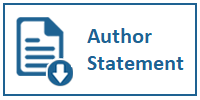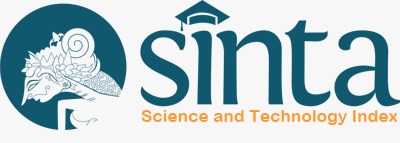Mbak Pia's Comics: Representation Of Statistics Indonesia Organizational Culture Through Visual Communication
DOI:
https://doi.org/10.31937/ultimart.v16i2.3258Abstract
Mbak Pia's comic is a comic strip aired in Varia Statistik magazine, an internal magazine that published monthly within the Statistics Indonesia (BPS). Since it was first aired in 2012, Mbak Pia's comic has now reached its 117th series. Mbak Pia's comic depicts the world of daily work of BPS employees packaged in a funny and entertaining story. But on the other hand, this comic also conveys an important message in the form of internalizing core values in the BPS organization: professional, integrity, and trustworthy. The purpose of this study was to analyze the message conveyed in the Mbak Pia's comic. The method used is an interpretive method with a qualitative approach. While the analysis used is the semiotic analysis of Roland Barthes. The results of this study show that Mbak Pia's comics not only tell about the world of daily work of BPS employees and internalization of core values in the BPS organization, but are also loaded with criticism of work culture that is not in accordance with the core values of the BPS organization. Some of the things that are criticized in the comic story are those related to planning, employee performance, and employee competence. For this reason, BPS needs to emphasize a strong commitment to all its employees in upholding the core values of the BPS organization.
Keywords: comics; culture; organization; visual communicationDownloads
Published
How to Cite
Issue
Section
License
Authors retain copyright and grant the journal right of first publication with the work simultaneously licensed under a Creative Commons Attribution-ShareAlike International License (CC-BY-SA 4.0) that allows others to share the work with an acknowledgement of the work's authorship and initial publication in this journal.
Authors are able to enter into separate, additional contractual arrangements for the non-exclusive distribution of the journal's published version of the work (e.g., post it to an institutional repository or publish it in a book), with an acknowledgement of its initial publication in this journal.
Copyright without Restrictions
The journal permits the author(s) to hold the copyright without restrictions and will hold distributing rights without limitations.
The submitted papers are assumed to contain no proprietary material unprotected by patent or patent application; responsibility for technical content and for protection of proprietary material rests solely with the author(s) and their organizations and is not the responsibility of the Ultimart: Jurnal Komunikasi Visual or its Editorial Staff. The main (first/corresponding) author is responsible for ensuring that the article has been seen and approved by all the other authors. It is the responsibility of the author to obtain all necessary copyright release permissions for the use of any copyrighted materials in the manuscript prior to the submission.















